Induction sealing (induction Bonding), otherwise known as cap sealing (induction Bonding), is a non-contact method of heating a metallic disk to hermetically seal the top of plastic and glass containers. This sealing (induction Bonding) process takes place after the container has been filled and capped.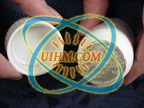
How it works:
The closure is supplied to the bottler with foil liner already inserted. Although there are various liners to choose from, a typical induction liner is multi-layered. The top layer is a paper pulp that is generally spot-glued to the cap. The next layer is wax that is used to bond a layer of aluminum foil to the pulp. The bottom layer is a polymer film laminated to the foil. After the cap or closure is applied, the container passes under an induction coil, which emits an oscillating electromagnetic field. As the container passes under the induction coil (sealing (induction Bonding) head) the conductive aluminum foil liner begins to heat. The heat melts the wax, which is absorbed into the pulp backing and releases the foil from the cap. The polymer film also heats and flows onto the lip of the container. When cooled, the polymer creates a bond with the container resulting in a hermetically sealed product. Neither the container nor its contents are affected, and this all happens in a matter of seconds.
It is possible to overheat the foil causing damage to the seal layer and to any protective barriers. This could result in faulty seals, even weeks after the initial sealing (induction Bonding) process, so proper sizing of the induction sealing (induction Bonding) is vital to determine the exact system necessary to run a particular product.
sealing (induction Bonding) can be done with either a hand held unit or on a conveyor system.
A more recent development (which suits a small number of applications better) allows for induction sealing (induction Bonding) to be used to apply a foil seal to a container without the need for a closure. In this case, foil is supplied pre-cut or in a reel. Where supplied in a reel, it is die cut and transferred onto the container neck. When the foil is in place, it is pressed down by the seal head, the induction cycle is activated and the seal is bonded to the container. This process is known as direct application or sometimes "capless" induction sealing (induction Bonding).
Reasons that induction sealing (induction Bonding) may be useful
There are a variety of reasons companies choose to use induction sealing (induction Bonding):
Tamper evidence
Leak prevention
Freshness Retention
Pilferage protection
Sustainability
Production Speed
Tamper evidence
With the U.S. Food and Drug Administration (FDA) regulations concerning tamper-resistant packaging, pharmaceutical packagers must find ways to comply as outlined in Sec. 450.500 Tamper-Resistant Packaging Requirements for Certain over-the-counter (OTC) Human Drug Products (CPG 7132a.17).
Induction sealing (induction Bonding) systems meet or exceed these government regulations. As stated in section 6 of Packaging Systems:
“…6. CONTAINER MOUTH INNER SEALS. Paper, thermal plastic, plastic film, foil, or a combination thereof, is sealed to the mouth of a container (e.g., bottle) under the cap. The seal must be torn or broken to open the container and remove the product. The seal cannot be removed and reapplied without leaving visible evidence of entry. Seals applied by heat induction to plastic containers appear to offer a higher degree of tamper-resistance than those that depend on an adhesive to create the bond…”
Leak prevention/protection
Some shipping companies require liquid chemical products to be sealed prior to shipping to prevent hazardous chemicals from spilling on other shipments.
Freshness
Induction sealing (induction Bonding) keeps unwanted pollutants from seeping into food products, and may assist in extending shelf life of certain products.
Pilferage protection
Induction-sealed containers help prevent the product from being broken into by leaving a noticeable residue from the liner itself. Pharmaceutical companies purchase liners that will purposely leave liner film/foil residue on bottles. Food companies that use induction seals do not want the liner residue as it could potentially interfere with the product itself upon dispensing. They, in turn, put a notice on the product that it has been induction-sealed for their protection; letting the consumer know there was a liner on the plastic bottle prior to purchase.
Sustainability
In some applications, induction sealing (induction Bonding) can be considered to contribute towards sustainability goals by allowing lower bottle weights as the pack relies on the presence of an induction foil seal for its security, rather than a mechanically strong bottle neck and closure.
Induction heating analysis
Some manufacturers have produced devices which can monitor the magnetic field strength present at the induction head (either directly or indirectly via such mechanisms as pick up coils), dynamically predicting the heating effect in the foil. Such devices provide quantifiable data post-weld in a production environment where uniformity - particularly in parameters such as foil peel-off strength, is important. Analysers may be portable or designed to work in conjunction with conveyor belt systems.
High speed power analysis techniques (Voltage and Current measurement in near real time) can be used to intercept power delivery from mains to generator or generator to head in order to calculate energy delivered to the foil and the statistical profile of that process. As the thermal capacity of the foil is typically static, such information as true power, apparent power and power factor may be used to predict foil heating with good relevance to final weld parameters and in a dynamic manner.
Many other derivative parameters may be calculated for each weld, yielding confidence in a production environment that is notably more difficult to achieve in conduction transfer systems, where analysis, if present is generally post-weld as relatively large thermal mass of heating and conduction elements combined impair rapid temperature change. Inductive heating with quantitative feedback such as that provided by power analysis techniques further allows for the possibility of dynamic adjustments in energy delivery profile to the target. This opens the possibility of feed-forward systems where the induction generator properties are adjusted in near real-time as the heating process proceeds, allowing for a specific heating profile track and subsequent compliance feedback - something that is not generally practical for conduction heating processes.
Benefits of induction vs. conduction sealing (induction Bonding)
Conduction sealing (induction Bonding) requires a hard metal plate to make perfect contact with the container being sealed. Conduction sealing (induction Bonding) systems delay production time because of required system warm-up time. They also have complex temperature sensors and heaters.
Unlike conduction sealing (induction Bonding) systems, induction sealing (induction Bonding) systems require very little power resources, delivers instant startup time, and its sealing (induction Bonding) head can conform to “out of specification” containers when sealing (induction Bonding).
Induction sealing (induction Bonding) also offers advantages when sealing (induction Bonding) to glass: Using a conduction sealer to seal a simple foil structure to glass gives no tolerance or compressibility to allow for any irregularity in the glass surface finish. With an induction sealer, the contact face can be of a compressible material, ensuring a perfect bond each time
Variety of products that use induction sealing (induction Bonding)
Pharmaceutical
Nutraceutical
Food
Dairy
Beverage
Cosmetics, health & beauty
Automotive petroleum products
Chemical
Agricultural and ag chem.
Animal care and medicines
Sporting goods supplies
Children’s toys (clays, bubbles, etc.)
Pastes
Paints
Home remodeling products
Musical instrument supplies (cleaners, resins, lubricants, polishes)
Dental
Personal pleasure products
Hunting / fishing aids
Computer aids/ inks
Laundry detergent /products
Manufacturing shop supplies
School supply products
Inks, dyes, carbon products….
condoms
History
Induction sealing (induction Bonding) inventor Jack Palmer (circa 1995)
1957-1958 - Original concept and method for Induction sealing (induction Bonding) is conceived and proven by Jack Palmer (a process engineer at that time for the FR Corporation - Bronx, NY) as a means of solving liquid leakage from polyethylene bottles during shipment
1960 - U.S. Patent (# 2,937,481) is awarded to Jack Palmer, in which his concept and process of Induction sealing (induction Bonding) is made public
Mid-1960s - Induction sealing (induction Bonding) is used worldwide
1973 – First solid state cap sealer introduced
1982 – Chicago Tylenol murders
1983 – First transistorized air-cooled power supply for induction cap sealing (induction Bonding)
1985 – Universal coil technology debuted
1992 – Water-cooled, IGBT-based sealer introduced
1997 – Waterless cap sealers introduced (half the size and relatively maintenance free)
2004 – 6 kW system introduced
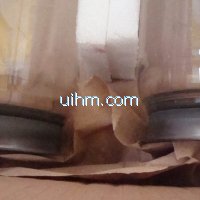
induction bonding for glass frit sealing and metal alloy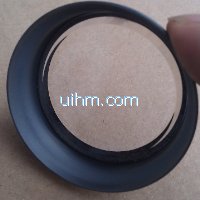
induction bonding camera lens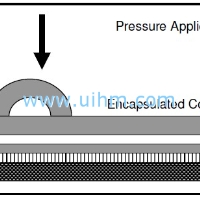
Induction Bonding Solar Panel Shingles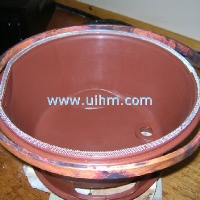
Induction bonding Metal to plastic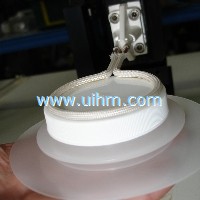
Induction Cap Sealing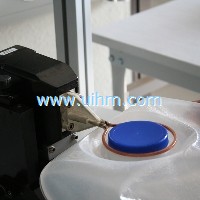
Induction Cap Sealing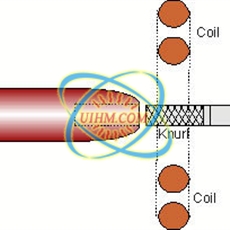
Induction Bonding plastic handle to knife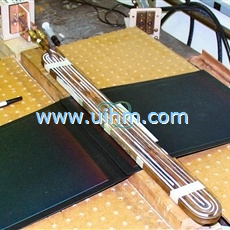
Induction Bonding Solar Panels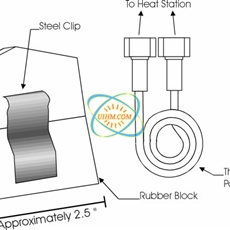
Induction Bonding Steel Clips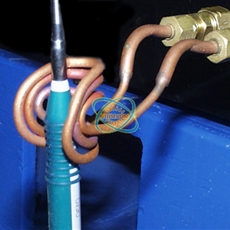
Metal to Plastic by Induction Bonding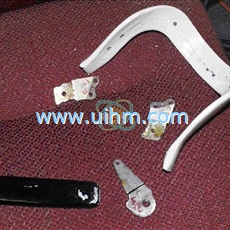
Induction De-bonding Stainless Steel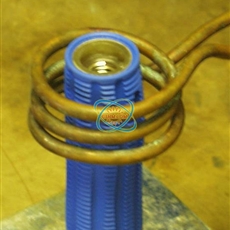
Induction Bonding plastic sleeve to stainless steel handle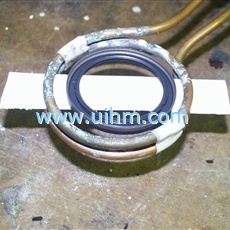
Induction Debond rubber seal from steel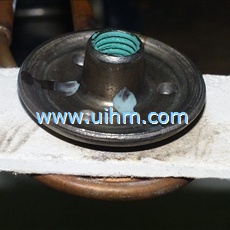
Induction Bonding Gasket to Nut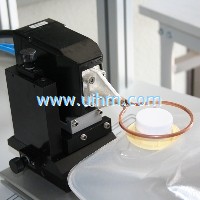
Induction Cap Sealing
Induction Bonding Rear View Mirror Brackets to Windshield Glass
 induction bonding for glass frit sealing and metal alloy Type:
induction bonding for glass frit sealing and metal alloy Type:
Class: Induction BondingIntro: induction bonding for metal alloy and glass frit sealinginduction bonding for glass frit sealing and metal alloy
 induction bonding camera lens Type:
induction bonding camera lens Type:
Class: Induction BondingIntro: induction jointing camera lensinduction jointing camera lens 1
 Induction Bonding Solar Panel Shingles Type:
Induction Bonding Solar Panel Shingles Type:
Class: Induction BondingIntro: Objective To heat the stainless steel substrate of a solar panel shingle in order to melt the polymer encapsulant, allowing two shingles to bond together with a 3 inch overlap.Material 3" by 10.25" section of a 21" solar panel shingleTemper
